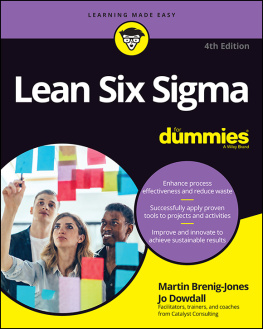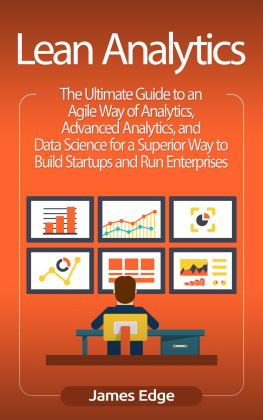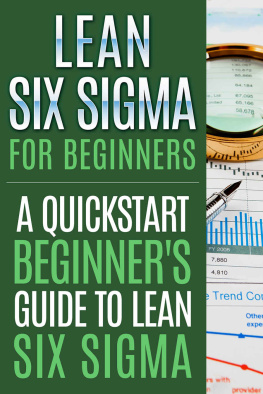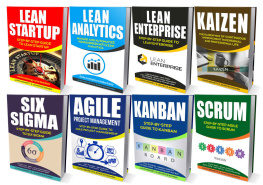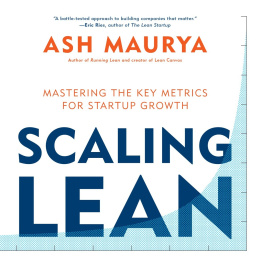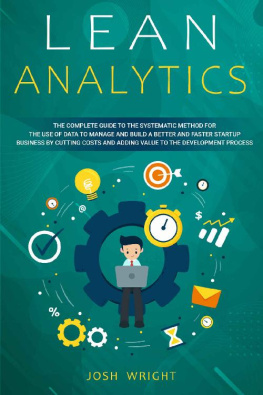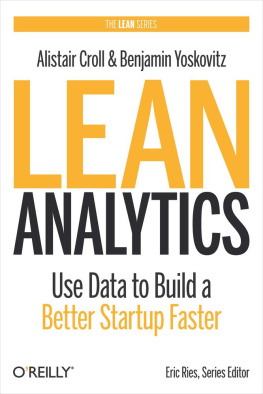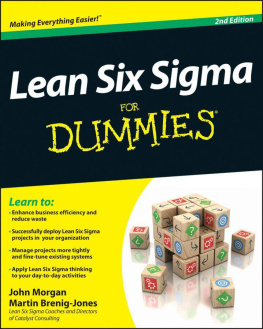Lean Enterprise
Learn the Power of Analytics, Metrics, Six Sigma, Principles, Grow Your Online or Startup Business
Simon Shepard
Copyright 2020 by Simon Shepard. All rights reserved.
Table of Contents
Introduction
Welcome to, Lean Enterprise. On the off chance that you are understanding this, it is on the grounds that you are not kidding about figuring out how your organization has improve its general exhibition by accomplishing more with less.
At the point when you grasp the Lean Enterprise approach, you are tolerating the way that there are parts of your organization which may not be required. Presently, this doesn't imply that you will begin terminating staff left and right. What it implies is that you have to make sense of the ideal asset distribution for your organization.
Nonetheless, if that implies removing portions of your organization, both staff and hardware, at that point so be it. Frequently, dispensing with parts of an organization or association is significantly more helpful than endeavoring to retrain or reallocate such asset.
In actuality, most organizations make the misstep of tossing cash at an issue. We imply that a decent arrangement of organizations accept that having enormous and even enlarged structures will guarantee them with the assets that they need so as to take advantage of their benefits.
Actually there is no requirement for huge or even little structures; the test is to figure out what your organization entirely and go from that point. At the point when you can distinguish what your organization really needs (both regarding staff and hardware) you will have the option to benefit as much as possible from the advantages in your organization.
Thus, how about we investigate how the Lean Enterprise approach can assist you with arriving.
Chapter 1: Lean Enterprise Method
The Lean Enterprise approach is a fairly direct administration theory which comprises of removing any aspect of an organization or association that doesn't add to conveying an incentive to the client.
Generally, it implies that if there is an aspect of an association that isn't offered some incentive which would then be able to be moved to the client, at that point it needs to go. This may sound revolutionary, yet the truth of the matter is that understanding your organization's incentive is basic so as to benefit as much as possible from your association's qualities and resources.
This methodology was first presented by Toyota in the last part of the 1950s and mid 1960s. Their way of thinking become to convey similar measure of significant worth to clients with minimal measure of assets and staff required. The primary concern to remember is that this methodology doesn't call for workaholic behavior staff and utilizing gear as far as possible, what it ponders is the requirement for proficiency.
Frequently, enormous enterprise become involved with building huge, regulatory networks that will in general log jam measures. This not just directly affects the main concern, it might likewise estrange clients from having a state in what esteem the organization conveys to them.
This is the reason the most significant thing that organizations need to comprehend is the thing that their incentive is. All things considered, an incentive is the real worth that clients get from the utilization of your association's items and administrations.
An incentive may convey a sure of sort of significant worth which may not be substantial. For instance, extravagance things, while helpful, fill a similar utilitarian need as more affordable things. What extravagance things do is give a specific degree of status to customers. Therefore, this elusive worth is the thing that clients are genuinely.
Think about this:
All vehicles give a similar fundamental reason which is to fill in as a methods for transportation. However, a customary vehicle, when contrasted with an extravagance car, don't give a similar status as an extravagance vehicle would. This is an impalpable worth that clients are eager to pay for.
Anyway, the test them turns out to be: how to deliver a similar incentive, with a similar degree of value, yet devouring less assets while being more productive?
This inquiry represents a genuine test since it for the most part infers utilizing two things: time and staff. The appropriate response is both straightforward and complex. The straightforward answer is to retool and overhaul measures. The perplexing part is really figuring out how to make measures more effective in their utilization of time and assets.
A decent dependable guideline for this situation is to remove whatever doesn't convey an incentive to the client or contribute toward building an incentive for the clients. Normally, this implies do some genuine soul-looking so as to decide whether the manner in which the organization is creating is really the most productive route in doing as such.
Subsequently, the Lean Enterprise reasoning reduces to conveying the greatest measure of client esteem, while enhancing the utilization of assets during the assembling cycle. That suggests accomplishing more with less. It likewise infers idealizing the creation cycle to a point where it is productive to such an extent, that there is pretty much nothing, or no waste, extra at long last.
Subsequently, the initial phase in grasping the Lean Enterprise approach is to direct a cycle review. At the point when you do this, you should have the option to distinguish any expected channels on your efficiency. At the point when you happen to discover them, attempt to perceive the truth about them: channels. Additionally, distinguishing these channels isn't tied in with allocating fault. It is essentially about changing the circumstance with the goal that effective utilization of assets is made. In the event that that suggests cutting staff and disposing of inefficient assets, at that point so be it. All things considered, lean endeavors are commonly ready to reallocate existing assets into more profitable jobs accordingly making measure themselves more proficient without relinquishing a lot.
Chapter 2: Lean Enterprise Basics
The Lean Enterprise is upheld by five standards. These standards are intended to be the controlling basics what permit experts, directors and chiefs to smooth out their cycles and assets so that they can turn out to be more proficient in their everyday activities. Besides, these standards give a methodical methodology toward improving generally assembling and worth conveyance abilities.
At last, after these standards permits organizations and associations to locate the correct harmony between their targets and the worth they try to convey to clients. All things considered, this isn't tied in with compromising.
A long way from it.
The fundamental accentuation is to locate the correct harmony among productivity and quality. In such manner, clients can get the quality worth they have generally expected without relinquishing the worth they get. The most effective associations are fit for creating so that they can really improve their nature of assembling while at the same time getting much more proficient.
Accordingly, here are the five standards:
Value. This is, by a wide margin, the most significant perspective to consider inside the area of an organization. Worth is the thing that clients escape the items and administrations that an organization gives. Worth is a fairly abstract issue since it is the thing that clients see to escape that incentive they obtain. This is tied in with meeting desires through the fulfillment of requirements. So, on the off chance that client feel like their needs are not being met, at that point the incentive is essentially deficient.


